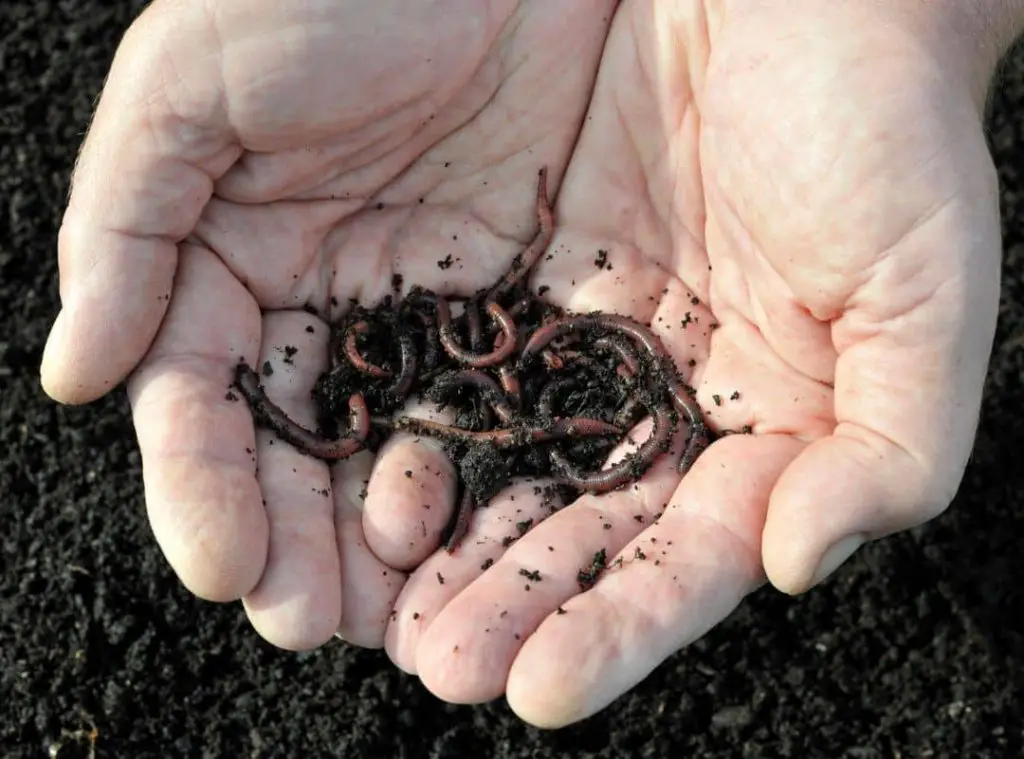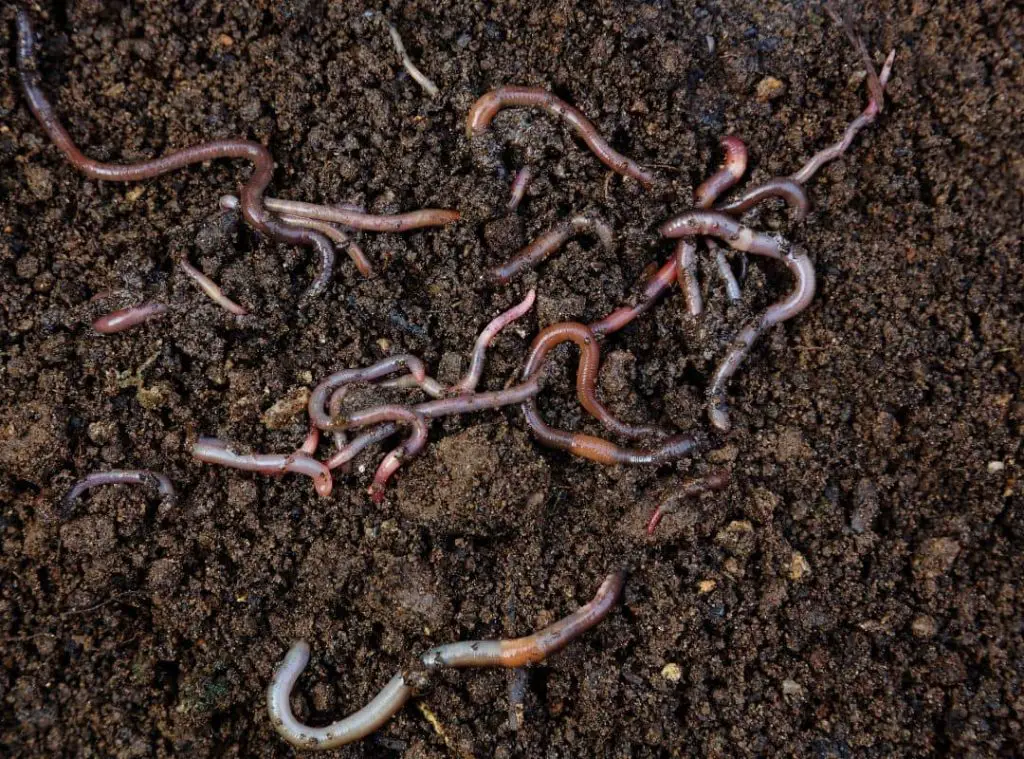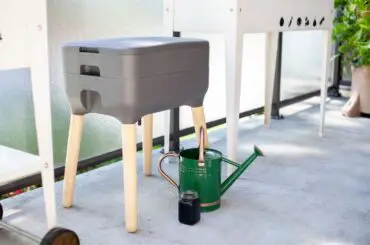If you are wondering “how many worms do I need for composting”, ideally it should be one pound of worms per square foot of the composting bin. In other words, it should be one pound of worms per pound of food waste.

So approximately there would be about 1000 mature worms per pound. However, there are other things which you need to keep in mind when deciding the number of earthworms and this article will help you to learn on these aspects which could impact it directly and indirectly too. You could use earthworms to do composting as it would speed up the composting process. Consequently, it would result in a higher quality compost which would be quite useful for the plants as well as for the garden.
Once you use worms in the composting process, it excretes a matter called vermicast. These are nutritious worm castings which would be quite crucial in the composting process. However, the number of worms you use for this purpose plays a major part here.
How many worms do I need for composting?
Contents
- 1 How many worms do I need for composting?
- 2 How to decide the number of worms you need based on the bin size ?
- 3 Can There Be Too Many Worms In Compost?
- 4 Different Types of Composting Worms
- 5 What kind of bin should you use for vermicomposting ?
- 6 What Kind of Foods Can Worms Eat
- 7 Why Worms Try To Crawl Away From The Compost Bin
- 8 Benefits Of Vermico mposting for Plants
- 9 How To Set Up A Vermicompost Bin
- 10 Conclusion
You need to decide on the number of worms you want for vermicomposting depending on several factors. Literally, you need to change the number of worms based on the type of bin you use. Further the way you want to approach it also impacts on deciding the number of worms. For example, you need to decide the number of worms depending on the food waste you are going to utilize for this purpose.
How to decide the number of worms you need based on the bin size ?
As above mentioned, you need to have one pound of worm per square foot of surface area. That said, bear in mind that worms such as red wiggles can multiply rapidly and you might have to transplant them in another bin when the requirement arises. That would help you to avoid any overpopulation which could take place. In addition to that, you should make sure that you will fulfill the dietary requirements of all the worms present in the bin as well.
if you have used five pounds of worms in a huge bin and if you struggle to provide sufficient food for them it would not give you the desired results of the composting. So, you need to decide the number of worms you use depending on the food scraps you have as well. Red wiggles can consume so much food on a daily basis. In other words, they can eat to the volume of half of their body weight daily. Literally there would be about 1000 mature composting worms per each pound .
Besides these, you should make sure that you have a somewhat large bin to accommodate the worms as well. It would allow them to populate freely. However best would be to start this process with using just 500 worms or even little less than that. Once you get experience and get a hang of it, you may increase the number of worms and try it out.
You can purchase worms from online platforms by number of worms instead of their weight. It would be easy for you to conduct the composting based on the number of worms rather than going ahead per pound. For a start you can go ahead with 500 worms or even less than that. That said, if you wish to go ahead with worms per pound and if you are comfortable doing that you may go ahead with that option too.

Can There Be Too Many Worms In Compost?
I recommend not having too many worms in compost as then the worms would run out of sufficient food. It is always best to have the right number of worms as then they can fulfill their dietary requirements properly. On the other hand, if you use a smaller number of worms, chances are that they would over consume the food scraps.
If we further look into this considering worm types such as red wiggle, they have the ability to regulate their population depending on the environmental conditions they are in. So, if you think there are too many worms in your compost you can just let them be or try to move them out to another bin.
Different Types of Composting Worms
There are two main composting worms called red wiggles and European nightcrawler which you can commonly spot in composting. They would look alike and you may get confused in distinguishing them. However the red wiggle is somewhat small and less muscular compared to other worm types. They would reproduce rapidly and would prefer to have moderate temperature levels.
The red wiggles would tend to stay on the top. On the other hand, the European nightcrawlers would prefer to stay down in the bin and burrow deep too. They can enhance the air circulation in the soil and that characteristic makes them perfect for gardening. Literally they would deposit nutrient rich castings deep in the soil. There are other worm species also which you could use. However finding them is somewhat challenging as they are rare to spot.
What kind of bin should you use for vermicomposting ?
The right bin should consist of adequate draining holes. That said, if you use a metal can and keep it outdoors, chances are that it would develop rust. Further a wooden bin may start deteriorating too. In addition to that, refrain from using wooden bins which are made of cedar or redwood as they can be harmful for the worms. Many people tend to go ahead with plastic bins as well as with Rubbermaid containers.
What Kind of Foods Can Worms Eat
They can feed on anything which is biodegradable. With that being said, I urge you to avoid using meat, fat and bones as they are too hard and the worms would find it difficult to digest them. Besides, once the worms start to work on them, those materials would start to emit a foul smell as well.
I suggest you use elements such as fruits, vegetables, squash, pumpkin , eggshells, bread, pasta grains and coffee grounds too. In addition to that they can consume tea bags, hair lawn clipping and animal feces too. That said, don’t use dog or cat manure for this purpose. Furthermore you need to refrain from using salty food, citrus, spicy food, oil, dairy and food items with preservatives too.
Why Worms Try To Crawl Away From The Compost Bin
If you spot a few worms trying to leave the bin, it is normal. That said, if you spot clumps of worms are leaving, it means something is wrong with the compost bin. For example, they would leave the compost bin when they go in search of oxygen.
Furthermore, if there are excess moisture levels and new baby worms they may tend to leave the compost bins too. In addition to that, if there are recent changes and imbalance of pH Level, it may also force them to leave the compost bins. If I further elaborate on this, worms use their surfaces for respiration. Thus, if they run short of sufficient oxygen they would try to leave the bin to have more oxygen. There could be numerous reasons which could factor in this condition. For example, if there is poor ventilation , too much moisture in the bin, they could result in lack of oxygen in the bin.
Besides, if you dump too much material on top of them and if you are using a poor bin design it would also make them starve of sufficient oxygen levels. if your compost bin doesn’t contain enough air holes, it would increase the moisture level in the bin which will impact on the air circulation in the compost bin.
Furthermore, you need to avoid over feeding the worms too. Literally if you keep adding food scraps and you don’t spot them eating you need to stop feeding them. As aforesaid the excess moisture levels would also make them leave the bins, If there is too much moisture in the bins, it would result in mold and mildew developments there. So, always try to maintain a proper moisture level so that those conditions would be healthy for the worms.
Apart from these factors, if there are new baby worms, that would also make them crawl out of the bins. Worms can reproduce rapidly. So when there are baby worms formed, it would contribute to an overcrowded situation in the bin. Ultimately it would force them to leave.
Furthermore, if you had kept the worms in the same conditions for too long and exposed them for some drastic changes in the surrounding, it would force them to leave the compost bin. The recent changes are such adding new beddings, new worms or even changing food sources for the worms. Finally, the ph. level in the compost bin should also be at a neutral level.
Ideally it has to be between six to seven. If the worms are crawling out of the bin due to imbalance of pH, you could be tactful in adding eggshells as it would lower the pH level. Furthermore, you may also add grit so that it would make it easy for the worms to digest the food. I suggest you avoid using material such as acidic salty and oily food , potato chips as they could impact the pH level of the compost bin.
Benefits Of Vermico mposting for Plants
There is a wide array of benefits of practicing the vermicomposting method for plants. Literally you could convert the waste into a natural plant fertilizer and how good it is that. If you had not practiced this, you could have just thrown them away. Using this method is a complete organic way of fertilizing your plants. You can skip feeding your plants chemically if you practice this method well.
Apart from that , if you use a vermicompost for your plants, it would be highly enriched with nutrients as well. Vermicompost contains a substance which is crucial for the plant’s life in so many aspects.
For example, it would make it easy for the plants to absorb nutrients easily and faster. There is an element called worm mucus and it would not wash away easily too. Consequently, it would give a longer time for the plants to absorb the nutrients. Once the compost circulates through the bodies of the worms, it would make the compost nourished with microbes and bacteria. These elements would make the plants resistant towards the pests’ attacks as well as for the diseases.
In addition to that, vermicompost would help to regulate plant growth hormones as well. It would help the plants to grow healthily as well as firmly. Once your plants are growing healthily, you would not want to use pesticides.
How To Set Up A Vermicompost Bin
First you need to finalize the number of worms you want for this activity. Thereafter, you can start setting up the Vermicompost bin. Next, create a bedding at the bottom of the bin. You can arrange tear newspaper into ½ inch to 1-inch strips first. Next place them in a plastic bag and pour water to make them slightly damp. Next add the strips and some soil to the bin. You could add about two to our soil cups.
When you set this up, thereafter you may add the worms. Next, disperse the food scraps under the bedding. Further you may add a new dry newspaper on top of the bedding so that you could balance the moisture level and reduce the odor as well. Ultimately it would help to keep the flies out too.
You need to cover the bin by using plastic, wood or cloth so that you could let the worms be inside the bin while securing it from the pests. Ensure that you drill some holes around the lid so that it would allow for proper ventilation in the bin. Moreover you need to check the bedding on a regular basis and water it if it is necessary.
If the bedding is too moist, you can be tactful in adding dry bedding so that it would absorb excess moisture. Ensure that you fluff bedding once a week as that would allow the worms to get enough air.
Conclusion
Now you know the answer to the question “How many worms do I need for composting?”. Setting up a Vermicompost bin is fairly an easy process and it is very unlikely that you will mess it up. All you need to ensure is that you keep monitoring the bin and adjust the things if necessary.
So, to determine the number of worms you need would depend on the bin size as well as on the food sources you will be utilizing for them. It is always best to start with about 500 worms for a start and then start building from there. So, you don’t need to stress out doing it and instead enjoy doing it.
Read Next : Can I Compost In A Metal Bin? (Yes, Of Course)




